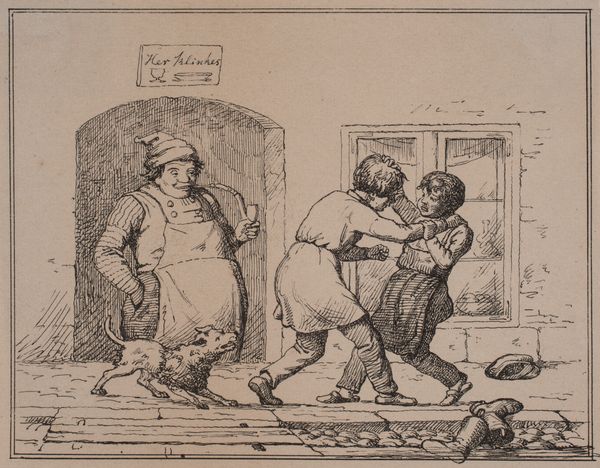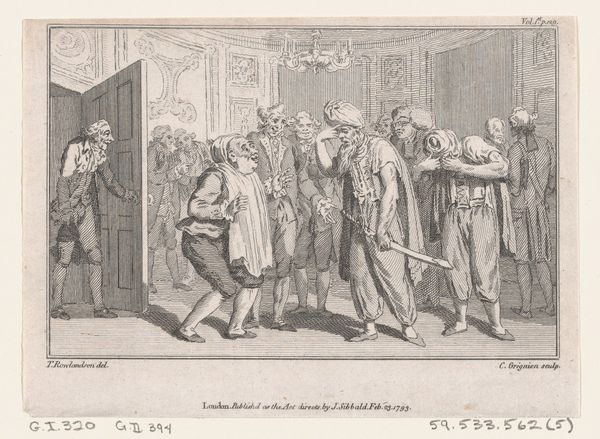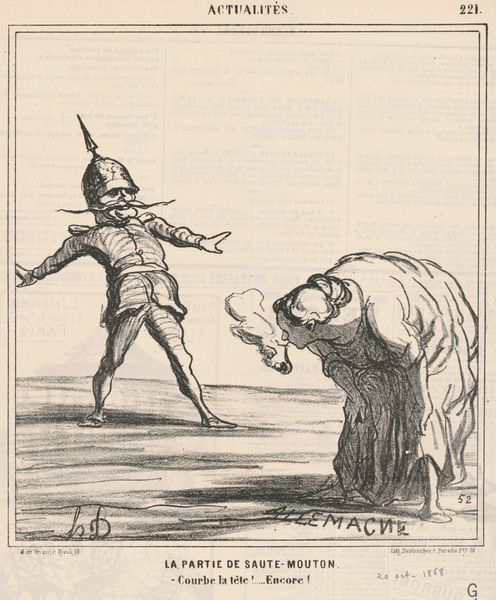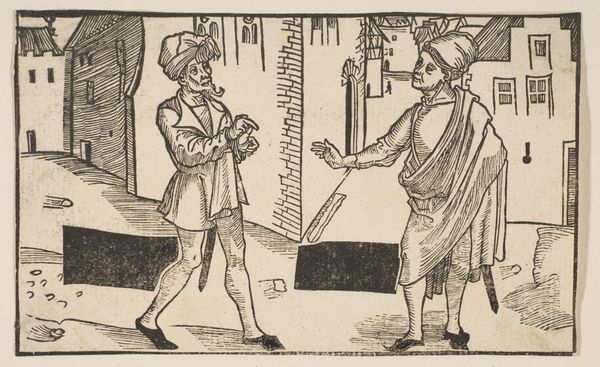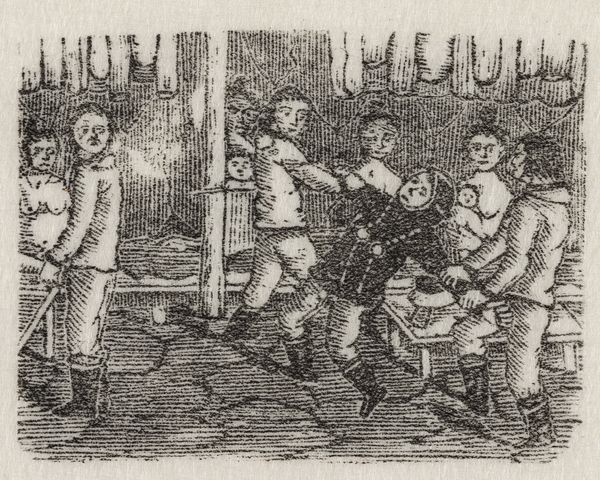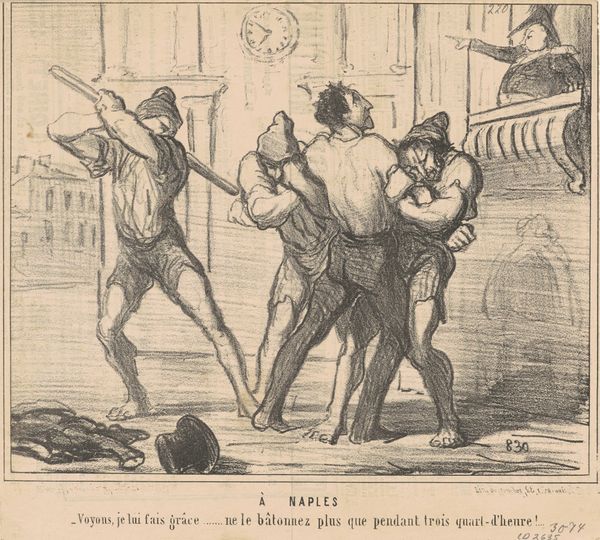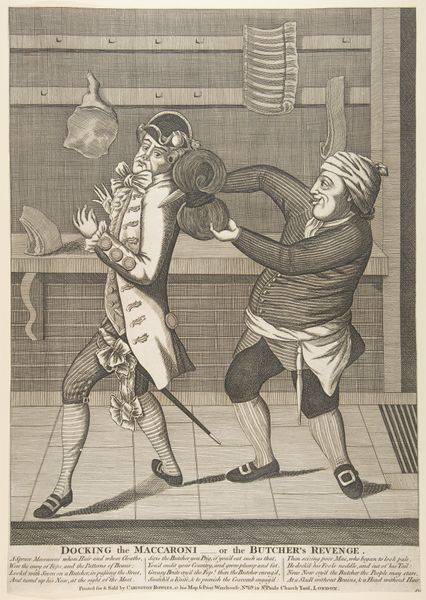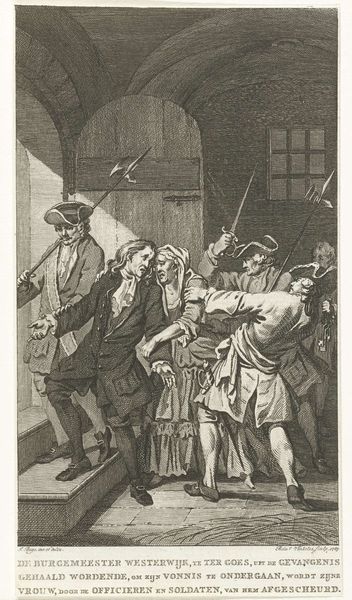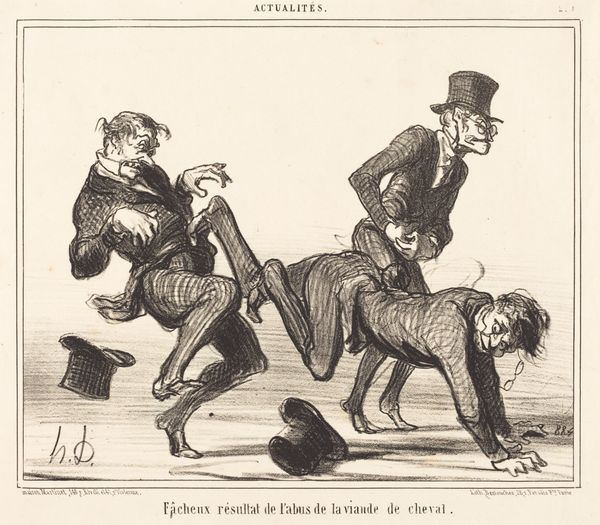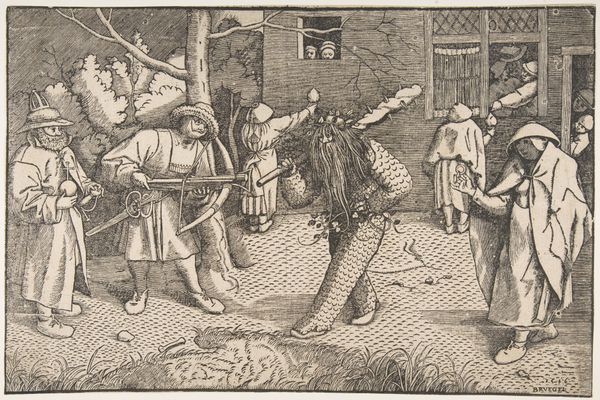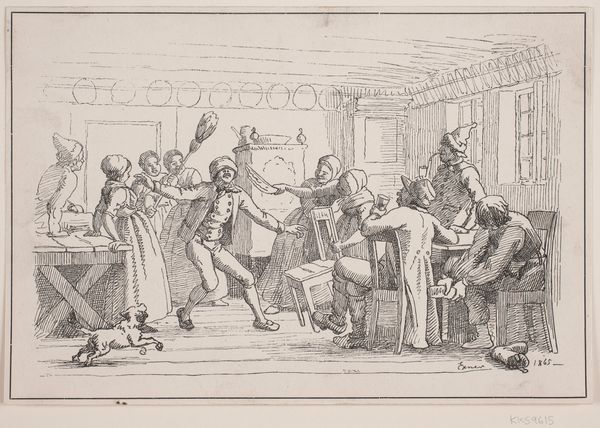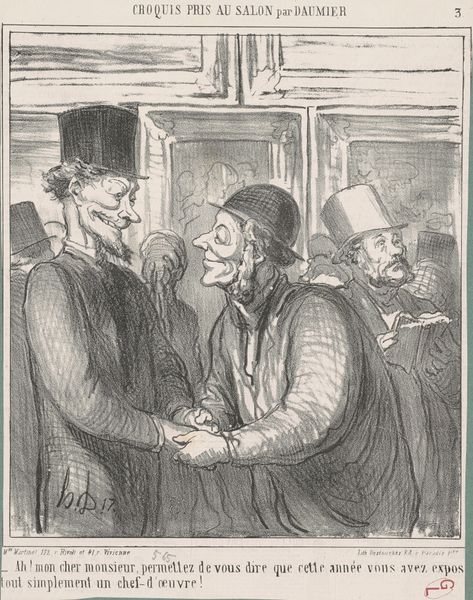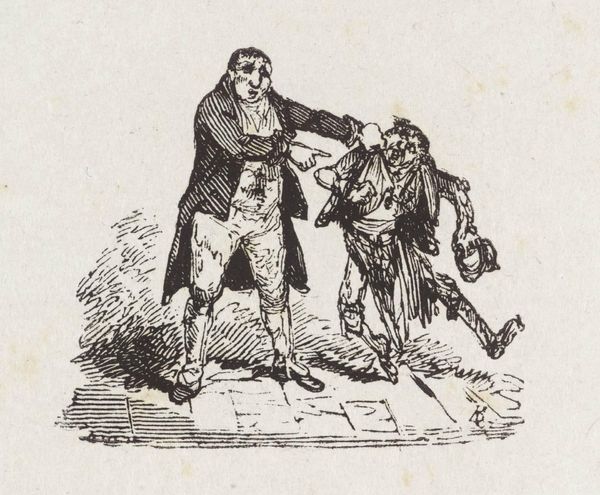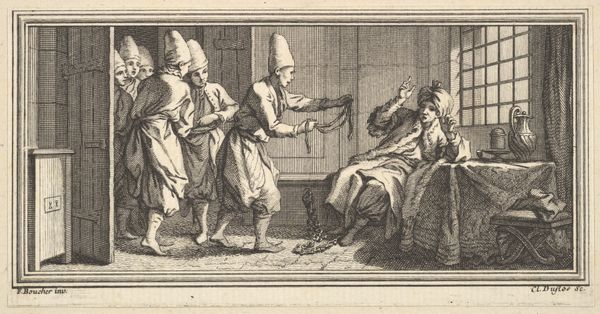
Illustration til Adam Oehlenschlägers digt "De to kirketårne" 1844
0:00
0:00
print, engraving
#
medieval
#
narrative-art
# print
#
figuration
#
romanticism
#
line
#
history-painting
#
engraving
Dimensions: 103 mm (height) x 146 mm (width) (bladmaal)
Editor: This is an engraving from 1844 by Lorenz Frølich, illustrating Adam Oehlenschläger's poem "The Two Church Towers". There’s a very immediate storybook feel to it. The details, like the knight's chainmail, create a sense of stepping back into a much older, romanticised time. What sort of underlying imagery do you think Frølich is engaging with here? Curator: The cultural memory evoked by this print is fascinating. Consider the figure of the knight. Clad in chainmail, he immediately summons the imagery of medieval heroism, of chivalry. Yet, his outstretched arms—are they welcoming or protective? What does this tell us of Frølich's commentary on Oehlenschläger's poem? Is it embracing the past or cautiously guarding against it? Editor: That’s an interesting point! I hadn't considered that his gesture could be ambiguous. I was reading it simply as protective, but now I'm not so sure. Curator: Note, too, how the mother figure with child at the door mirrors conventional depictions of Madonna and Child - Frølich seems to subtly overlay this classical signifier onto a contemporary scene. How does this conscious merging influence our reading of time, security, and memory? Editor: It's as if the domestic scene is both frozen in the past and ever-present, that interplay feels very modern, considering the time. So the print really becomes this layering of signs. Thanks, this has really reshaped my perspective. Curator: Indeed. Visual language offers endless reflection - symbols connecting the conscious with the unconscious in surprising ways.
Comments
No comments
Be the first to comment and join the conversation on the ultimate creative platform.
